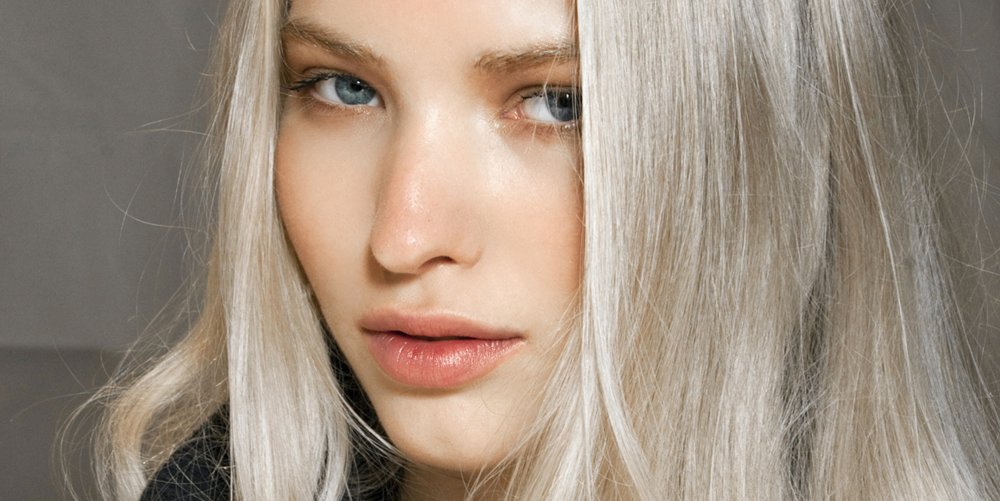Toning, plant coloring, permanent or semi-permanent coloring, henna, home coloring, sweeping, highlights, hair makeup ... All these terms make you dizzy? Do not panic, Sandrine Ruhlmann, hair beauty influencer and L'Oréal Professionnel spokesperson, helps us to take stock of all the coloring techniques.
Foilyage, the new scan
First, it is important to know that coloring techniques evolve along with coloring trends . "At the moment, we are looking for very natural effects, light fades, it forces us to practice subtle techniques," says Sandrine Ruhlmann.
Thus, the traditional locks have been replaced by the so-called Foilyage technique, a new scan that uses foils to color certain areas. It is also characterized by a very fluid transition, almost imperceptible, between shades. As a reminder, scanning involves applying the color directly with a brush for a natural and melted result.
Tone on tone, soft coloring
Today, we can easily bring reflections to all natural bases. It is the colorist who will guide the choice of the technique according to the request of the client. To simply bring relief, find a vibrant color - and if the white hair to camouflage are not too present - the tone on tone is the right solution. This color without ammonia also helps to heal the hair and bring it shine. On the other hand, it must be maintained every month. Toning also helps to maintain a color in addition to an oxidation coloring in the roots, it provides highlights and shine and really sheath hair.
Hair makeup, ephemeral coloration
One can also opt for an even more ephemeral coloration: a make-up of the hair. Depending on the exposure time, the color will fade more or less quickly. This technique, developed by many brands, allows to test original colors and try the latest coloring trends, temporarily, before launching if the result pleases us. To us the silver hair or the peach hair.
The makeup of the hair is applied like a gel or a cream, which is allowed to rest between 5 and 10 minutes. Then, the color fades with the shampoos. The advantage is that you can really tailor and apply it on very specific areas, for a test before starting or for a party.
Plant coloring, towards a return to nature
If the trends are natural, it is also the case for the techniques, which seek more and more a return to natural products and environmentally friendly and hair. That's why more and more women are turning to plant coloring. It allows to color the hair subtly, gently, with a natural graduation. The outfit is equivalent to a classic coloring but as the rendering is more subtle, the roots often slice less (and because of this, retouching may be more spaced).
However, if the coloring plant has the wind in stern, it is not suitable for all. She covers the white hair with a little transparency, as Sandrine Ruhlmann explains.
We also mention the henna - plant substance that comes from the leaves of a small shrub - among the natural colorings, but this technique does not cover all shades of hair. Also, if the henna can successfully cover the white hair and easily color the blond chestnut for a result ranging from red to mahogany. On the other hand, it will only have a reflective effect on the darkest colors. Similarly, we can not thin his hair with this technique.
Discoloration, to maintain regularly
A time shunned, discoloration returns at the same time as the trend of very light hair, white or polar blondes. On the other hand, we entrust our hair to an expert who we trust, who will proceed in stages to achieve the desired result: "It takes sometimes 6 months to 1 year to reach the desired shade initially, especially when seeking to clear hair, "explains Sandrine Ruhlmann. After discolouration, the hair will grow back in its natural color, but for a non-demarcating effect, discoloration requires very regular maintenance .
Oxidation staining, the radical solution for white hair
The most classic coloring also remains the most covering for white hair. However, Sandrine Ruhlmann never uses it on the totality of the hair: "I reserve the oxidation coloration with the roots to camouflage the white hair, but in length, I privilege a tone-on-tone coloration or a makeup of the hair. The result is much more natural! ".
Home coloring, the solution that helps
If Sandrine Ruhlmann is convinced of the quality of the coloring products that we find today in the trade, she advises against starting without having obtained, beforehand, an expert advice. For her, it is better to go to the salon for a custom hair diagnosis, before choosing to apply a home color. The risk is to obtain a charcoal, brittle hair. Also, she recalls, "we can not switch from one color to another (as in the living room, for that matter) with the house coloring. For that, we need a real accompaniment. "
The colorist, the independant expert for our hair!
In general, Sandrine Ruhlmann recalls that it is essential, when you want to color your hair - whether for a change of look or to camouflage white hair - to trust his colorist, who will guide us better. "Today, we go to the salon, we explain his desires and the colorist proceeds to a global work, he orients the client to a technique of scanning or foilyage, wick, tone on tone ... It is necessary to give one's expertise! "


